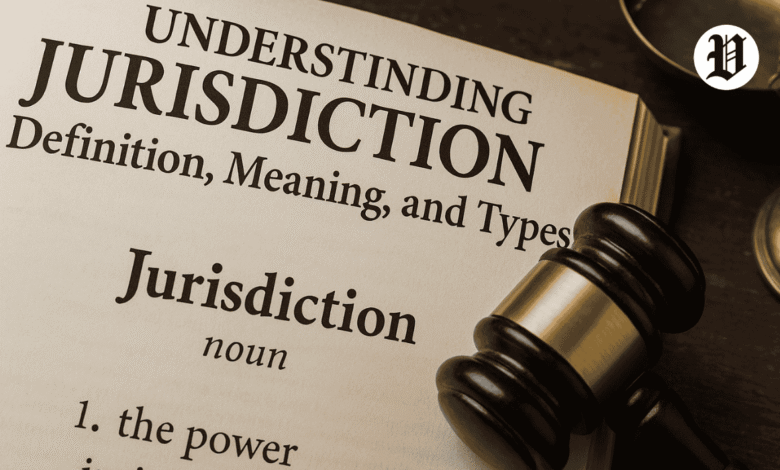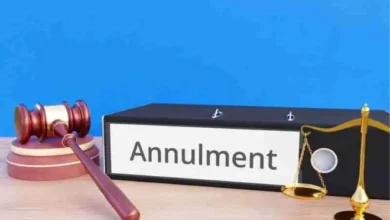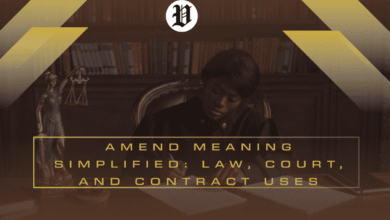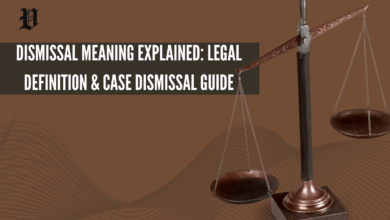Jurisdiction Meaning & Definition Explained

Hey folks, if you’ve ever found yourself scratching your head over why one court gets to handle a case and another doesn’t, you’re not alone. I remember back in my early days teaching law, students would always trip up on this one—it’s like the invisible fence of the legal world. Jurisdiction might seem like just another buzzword, but it’s the key that unlocks how our courts actually function.
In this piece, I’ll walk you through it all in straightforward terms, no fancy jargon required. We’ll cover what jurisdiction really means, why it’s a big deal, the various types out there, some real-life examples, and even how courts figure it out. Stick with me, and by the end, it’ll feel like second nature.
What Is Jurisdiction? Getting the Basics Straight
So, what is jurisdiction anyway? Simply put, it’s the official power a court or legal body has to hear cases, make rulings, and enforce them in a certain area or over specific issues. Picture it as the court’s “territory” where it can call the shots without stepping on toes.
The jurisdiction definition traces back to old Latin words—”juris” for law and “dicere” for speaking—so it’s basically the right to “speak the law.” If a court jumps in without proper jurisdiction, its decision could get tossed out, which is why lawyers obsess over it right from the start.
And honestly, grasping this helps demystify a lot of legal headlines you see. It’s not just academic; it affects real people every day.
Why Jurisdiction Matters in the Legal World
Jurisdiction isn’t some minor detail—it’s what keeps the whole system from turning into a free-for-all. It makes sure cases land in the hands of judges who know the ropes for that kind of dispute, avoiding mix-ups or biased outcomes. For example, without solid rules on court jurisdiction, you’d have courts from across the country butting into local matters, creating total confusion.
On a deeper level, the jurisdiction meaning in law connects to bigger ideas like fairness and separation of powers. It upholds things like due process by ensuring trials happen where they make sense—close to witnesses, evidence, and the folks involved. This setup also respects the balance between state and federal governments, preventing one from overpowering the other.
In my experience advising clients, overlooking jurisdiction can derail even the strongest case. It’s often the first hurdle in any lawsuit.
Figuring Out Jurisdiction: How It All Comes Together
How is court jurisdiction determined? It boils down to a checklist of sorts. Courts first check subject matter jurisdiction to see if they can tackle the topic at hand, like whether it’s a family squabble or a corporate merger. Then comes personal jurisdiction, which confirms the court has sway over the people or companies in the mix.
Location is huge too—territorial jurisdiction ties things to a specific place, and venue narrows it down even further to the right spot for trial. If something’s off, parties can challenge it with a motion, and the case might shift elsewhere or get dropped altogether.
Things get interesting in cases spanning borders or online dealings. Laws like long-arm statutes let courts reach farther if there’s a real link, but it’s all about keeping it fair so no one’s dragged into an inconvenient fight.
Breaking Down the Types of Jurisdiction
Alright, let’s get into the nitty-gritty: what are the types of jurisdiction? There are a handful of main ones, each with its own role. To make it easier, I’ve put together a table below that lists them out with quick explanations.
| Type of Jurisdiction | Meaning and Key Features |
| Original Jurisdiction | This is the starting point—where a court hears a case fresh, with all the witnesses and evidence. Think trial courts handling things from scratch. |
| Appellate Jurisdiction | Higher courts use this to double-check lower decisions, spotting legal slip-ups without redoing the whole trial. It’s about refining the law. |
| Subject Matter Jurisdiction | Focuses on the kind of case, like divorce or taxes. If it’s missing, the whole thing’s invalid—no ifs, ands, or buts. |
| Personal Jurisdiction | All about control over the individuals or businesses involved, based on their ties to the area. “Minimum contacts” is the magic phrase here. |
| Territorial Jurisdiction | Keeps it geographical— a court can’t rule outside its borders unless there’s a solid connection. |
| Concurrent Jurisdiction | When a couple of courts could both take it on, giving options. Handy for overlaps between state and feds. |
| Exclusive Jurisdiction | Solo act: Only one court gets to touch it, like feds on copyrights. |
This table gives you a snapshot of the types of jurisdiction and their meanings. It’s a quick reference for seeing how they fit together.
Original and Appellate Jurisdiction: The Ground Floor and the Review
Original jurisdiction is where the rubber meets the road. It’s for trial courts diving into the facts, questioning folks, and delivering that first verdict. Most everyday cases kick off here.
Appellate jurisdiction, though, is the appeal stage. Courts like the Supreme Court step in to review, fixing errors in how the law was applied. They rarely mess with the facts unless something’s way off base.
Subject Matter and Personal: What and Who
Subject matter jurisdiction is picky about topics. Federal courts grab it for things like interstate commerce or constitutional rights; states handle the rest.
Personal jurisdiction protects defendants from unfair hauls across the country. It needs those “minimum contacts,” as the Supreme Court laid out years ago in a shoe company case—keeps things constitutional.
Territorial, Concurrent, and Exclusive: Where and How Many
Territorial jurisdiction is straightforward: Stick to your turf. A Florida court won’t meddle in an Alaska-only issue without a hook.
As for concurrent jurisdiction definition, it’s shared power—multiple courts in play, so you pick. Like when a case could go state or federal.
Exclusive jurisdiction definition means one court only. No sharing, period—think military courts for service members.
To compare a few, check out this table on exclusive vs. concurrent vs. appellate jurisdiction.
| Aspect | Exclusive Jurisdiction | Concurrent Jurisdiction | Appellate Jurisdiction |
| Definition | One court has total control over certain cases. | Power split between courts; choose your fighter. | Reviewing prior rulings for mistakes. |
| Examples | Feds on patent disputes. | State/federal mix for some fraud cases. | Circuit courts checking trial outcomes. |
| Key Benefit | Experts handle it uniformly. | More flexibility in where to file. | Ensures consistent law application. |
| Limitations | Could bottleneck with waits. | Risk of shopping for friendly judges. | No new evidence; just legal tweaks. |
| When It Applies | Specialized areas like bankruptcy. | When laws overlap jurisdictions. | Post-trial appeals. |
This breakdown highlights the pros and cons, showing how they keep the system humming.
Jurisdiction in Action: Real-World Stories
Examples of jurisdiction make it click. Say there’s a fender-bender in Texas with drivers from different states and big damages—over $75K? That could trigger federal diversity jurisdiction, opening the door to U.S. district court.
One case that sticks with me is the 2018 South Dakota v. Wayfair decision. The Supreme Court broadened states’ territorial jurisdiction to tax remote sellers online, flipping old rules. It showed how jurisdiction adapts to e-commerce booms.
In crime, if a scam crosses state lines, federal jurisdiction often takes over via agencies like the FBI. No loopholes for crooks.
Or in divorce: If kids are involved across states, laws like the UCCJEA sort out the jurisdiction of a court based on the child’s home state. Real stuff that hits families hard.
These are solid examples of jurisdiction playing out, proving it’s not just theory.
Navigating Challenges in Today’s Jurisdiction Landscape
Jurisdiction evolves, especially with tech. Online harassment? Courts wrestle with personal jurisdiction—where’s the harm felt? Cases like one involving a tabloid reporter set precedents on targeting effects.
Globally, it’s treaties and statutes that bridge gaps, like allowing U.S. courts to hear foreign human rights claims under certain laws.
Recent shifts, like the 2020 McGirt v. Oklahoma ruling, redefined tribal jurisdiction over crimes on Native lands. It reshaped half of Oklahoma’s legal map, emphasizing historical treaties.
Answering Your Burning Questions on Jurisdiction
I’ve rounded up some common questions from my workshops and online chats. Here are 10 that pop up a lot, with straight answers.
What is jurisdiction in law?
It’s the legal authority a court has to decide cases and enforce rules over people, places, or issues.
What is the jurisdiction definition?
Jurisdiction definition is the power granted to a court to hear and rule on specific matters legally.
What does jurisdiction meaning in law cover?
Jurisdiction meaning in law includes the scope of a court’s control, from case types to geographic reach.
How is court jurisdiction determined?
Through checks on subject matter, personal ties, location, and laws—often tested early in proceedings.
What are the types of jurisdiction?
Key ones: original, appellate, subject matter, personal, territorial, concurrent, exclusive.
What are the four types of jurisdiction?
Commonly: original (initial hearings), appellate (reviews), concurrent (shared), exclusive (sole).
What does concurrent jurisdiction mean?
Concurrent jurisdiction definition: Multiple courts can handle the same case, offering choices.
What is exclusive jurisdiction definition?
Exclusive jurisdiction definition: Only one court has authority, barring others from stepping in.
What is appellate jurisdiction?
Appellate jurisdiction lets higher courts review lower ones for legal errors, not facts.
Can you share examples of jurisdiction?
Sure—like Wayfair for online taxes or McGirt for tribal crimes—showing jurisdiction’s real impact.
Final Thoughts: Making Sense of It All
Wrapping this up, we’ve covered everything from the basic what is jurisdiction to the finer points of types and determinations. It’s the glue holding our courts together, ensuring justice rolls out fairly. Whether you’re a student, a curious reader, or dealing with a legal snag, knowing this stuff empowers you. I’ve seen it click for so many over the years—hope it does for you too.





One Comment